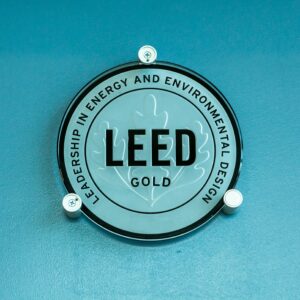Leadership in Energy and Environment Design (LEED)
 Among growing concerns for the Owners of existing buildings are the utility bills and the energy efficiency of the building’s equipment. A big question that is often asked is, “Am I living in a healthy indoor environment”? It is also very interesting to note that the wealth and health of an individual has a direct relationship to the overall energy efficiency of the building.
Among growing concerns for the Owners of existing buildings are the utility bills and the energy efficiency of the building’s equipment. A big question that is often asked is, “Am I living in a healthy indoor environment”? It is also very interesting to note that the wealth and health of an individual has a direct relationship to the overall energy efficiency of the building.
One such standard for improving a building’s overall energy efficiency is Leadership in Energy and Environment Design, LEED Certification. Developed by the US Green Building Council, USGBC in 1994, LEED is a green building rating system that provides a framework for creating highly efficient green buildings and providing ways for cost-savings in new and existing buildings.
Among many of the benefits of having a LEED certified building are cost savings over the life of the building related to lower energy and operating costs. Additional benefits include increased building value, higher rents, improved air and water quality, and a healthier work and living environment.
LEED certification is viewed from a perspective of a life cycle of the building. Therefore, project delivery is not only design and construction of the building. LEED certification dives deep into the efficiency and optimization of building performance during occupancy, as well as the end of the life span during demolition and recycling of building materials. Thus, from the beginning of the project, LEED requires a vision that identifies green building goals, budget, timeline, return on investment and standards. This is an integrative process, that requires input from all stakeholders during the early pre-design phase of the project. The project team includes Owners, Occupants Facility Managers, Janitorial Staff, Architect, Engineers, Interior Designers, Landscape Architect, Energy Consultants, and the General Contractor. LEED certification process ensures design, construction and building commissioning meets the agreed upon green building goals.
The LEED rating system is tailored to various buildings types, depending on the use and size of the building, as well as whether it is a new or existing facility. The most common rating is LEED BD+C, which stands for LEED Building Design and Construction, which applies to new construction or major renovations. A LEED ID+C (interior design and construction) rating applies to the interior fit-out, LEED O+M (operation and maintenance) applies to existing building improvements, and LEED ND (neighborhood development) applies to new land development projects.
LEED has a major areas of performance criteria that can be measured through a point system. Major areas of performance criteria are Location and Transportation, Sustainable Sites, Water Efficiency, Energy and Atmosphere, Materials and Resources, Indoor Environmental Quality, Innovation and Regional Priority. There are prerequisite points that a project must earn, and each category has point credit system that defines a green sustainable goal. Project certification is based on 100-point scale system, which adds up to four certification levels: Certified (40-49 points), Silver (50-59 points), Gold (60-79 points), and Platinum (80+ points).
Currently, LEED certification for existing buildings is a growing trend and the most important reason for this trend is a healthier indoor environment and an energy efficient building.



